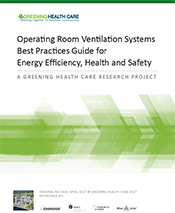Publications
For information about the value of conservation, energy efficiency guides or research, check here for publications from the IESO and its partners.
Documents referenced on this page, but not posted, can be obtained by contacting saveonenergy@ieso.ca with a link to the web page that lists the document and advising whether it needs to be provided in an accessible format. Please allow a minimum of one business day for a response.


2019-2020 Energy-Efficiency Report
The Save on Energy programs under the 2019-2020 Interim Framework were focused on ensuring value for customers and the electricity system as a whole. The overall costs to deliver energy-efficiency programs in Ontario were reduced by streamlining the delivery of the programs and focusing their designs to achieve the most impact.
Overall, participants in the Interim Framework contributed to 1.5 TWh of electricity savings for the province, exceeding targets set.
Download the full report (11 MB)


Report on Cannabis Greenhouses and Warehouses: Energy Management Best Practices
Ontario’s indoor cannabis sector is energy intensive. The Energy Management Best Practices for Cannabis Greenhouses and Warehouses report identifies how this emerging industry is creating a need for leaders in cannabis operations, policy makers and utilities to better understand the energy requirements of the sector and find ways to manage increased demands on energy systems. The report was a collaboration between the IESO and the Centre for Energy Advancement through Technological Innovation (CEATI), along with utilities in two Canadian and three United States jurisdictions. Learn more about the report findings and opportunities that exist for indoor cannabis facilities in Ontario.
Note, since completion of the study, the energy and demand projections for future growth in the cannabis sector in Ontario have slowed; however, the sector remains energy intensive and opportunities are available to help cannabis growing operations become more energy efficient.
Read the full report
Read the summary


Non-Energy Benefits Study
The IESO has released a report it commissioned that quantifies the non-energy benefits of energy efficiency. The study builds on earlier work that was completed in 2018 and is the first study of its kind to extensively research quantifying Ontario-specific non-energy benefits – such as improved comfort for homes and businesses, better lighting and more even temperature control.
Read the full study


Mid-tier commercial real estate energy study
The IESO commissioned a mid-tier commercial real estate (CRE) energy study in Ontario to assess energy management behaviours and perceptions, and to inform engagement with building owners and managers. The study provides valuable insights for industry stakeholders to help understand mid-tier operators’ drivers, barriers, decision making process, knowledge of and participation in energy efficiency and what is needed to help improve the overall operations of their buildings.
Read the full study
Read the summary
Watch the mid-tier CRE energy study webinar recording.


Helping Greenhouses Grow
The IESO is collaborating with Ontario’s agriculture sector to find new opportunities and innovative solutions to saving energy and demand as the sector adapts to new growth.


Ontario's Energy-Efficiency Potential
For Ontario businesses, energy efficiency will continue to be a cost-effective and valuable resource into the next decade and beyond. That’s what the results of the 2019 Achievable Potential Study (APS) found, a joint report from the IESO and Ontario Energy Board to identify potential energy savings and greenhouse gas emissions reductions over 2019 to 2038. And, for the first time, the report also looks at both electricity and natural gas savings. The APS helps inform the continued development of energy-efficiency programming and supports the IESO’s work to plan for Ontario’s future energy needs.
For more information visit the APS web page on the IESO website.


Take Control of Your Energy Costs
Managing your organization's energy consumption can start with a few basic steps. Learn how to keep your costs in check with this energy checklist.


IESO 2017 Report on Energy-Efficiency Activities
Energy efficiency remains the most cost-effective resource and a key component in planning for the energy needs of the province. Recognized as a leader in North America for its commitment to energy efficiency, Ontario has leveraged its achievements to help mitigate capacity gaps, defer the need to build new infrastructure, and increase business competitiveness. Ontario achieved 1.8 TWh of energy savings in 2017 – that’s 55 per cent more savings than the previous year. Find out more in the IESO’s Report on Energy-Efficiency Activities.


Ontario Municipal Energy Profile
Ontario’s municipalities are achieving strong results when it comes to managing their energy costs. According to a report prepared for the IESO and the Ontario Ministry of Energy by ICF Canada, they have decreased their electricity consumption by six percent since 2006 – in part due to their participation in Save on Energy programs.
Sector-Specific Publications


Market Characterization & Conservation Potential for Ontario's Drinking Water & Wastewater Treatment Plants
Many Ontario water treatment plants have taken steps to help them reduce electricity consumption. This report shows that municipalities can reduce their use by an additional ten per cent through operational and systemic changes and taking advantage of existing energy-saving opportunities.
Read the full report
Read the summary


LED Streetlight Research Series
LED Streetlights on roads or in parking lots can transform municipal operations – by reducing energy and maintenance costs – and making communities safer. These 2017 reports prepared by Lightsavers Canada demonstrates the value of making the switch to LED in public spaces.
The Realized Results of LED Streetlights: Seizing the opportunity
LED Lighting for Parking Facilities: A Lightsavers primer
Model Technical Specifications for Procurement of LED Luminaires in Canada
Building Intelligent Communities with Advance Streetlighting


Operating Room Ventilation Systems Best Practices Guide
Ventilation in hospital ORs is a high-energy intensive service. This report prepared by Greening Health Care provides insights into best practices adopted by various hospitals throughout Ontario to reduce costs and improve patient care.